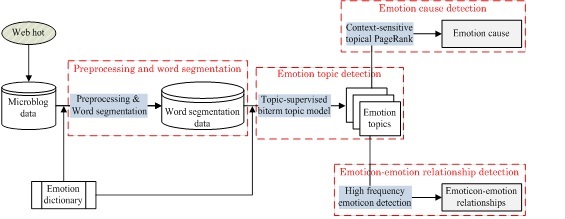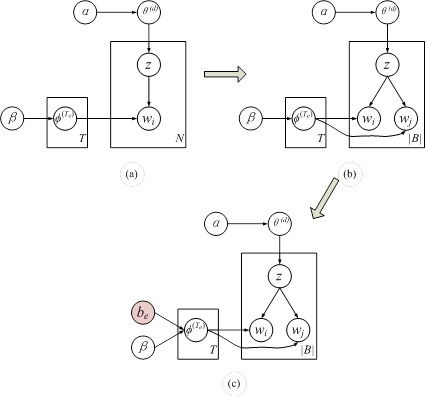Beijing, May 20, 2015
Fujitsu Research and Development Center today announced a concept-level emotion cause detection technology. First, a topic-supervised biterm topic model is designed to detect users’ multiple ‘emotion topics’ in event-related tweets. Then, context-sensitive topical PageRank is utilized to detect meaningful multiword expressions from each emotion topic as its causes. Finally, relationships between microblogging emoticons and people’s real emotions can also be detected with the emotion topic detection step.
Compared with existing mere word-level emotion cause detection models which just discover the most frequently co-occurred clauses or words with a single emotion word as the cause of this emotion, our technology can detect both emotion word based explicit emotional expressions and other implicit emotional expressions, by which we can get more accurate emotion cause detection result. Moreover, relationships between microblogging emoticons and people’s real emotions can also be detected with the emotion topic detection result in our model. Our emotion cause detection technology will provide enterprises with reason of emotion toward events related to them, and it will be very helpful to the business promotion, branding, or crisis management.
This technology will be presented at 24th World Wide Web international conference on May 20, in Florence, Italy.
[Background]
Emotion Cause Detection is a crucial method for enterprises to acquire web users’ emotion on events related to them. However, emotional expressions for different events are various, and many non-emotion-word emotional expressions are usually used. Existing emotion cause detection methods use same emotional dictionary for different events, and don’t consider non-emotion-word emotional expressions, which are all unreasonable. We developed a novel concept-level emotion cause detection model to deal with those problems.
[Topics]
Conventional technologies mainly take emotional words as complete emotional expressions. However, emotion is an abstract concept and emotional words are just the most explicit way for expressing emotions, but not the only way. Therefore, detecting the most frequently co-occurred clauses or words with those emotional word based emotional expression as the emotion cause is also incomplete. Web users may have various emotional expression ways and those ways may not as explicit as emotional words. Therefore, detection of concept-level implicit emotion expressions is very important for a deeper analysis on user emotions and emotion causes.
[Technology]
Concept-level emotion cause detection includes four functional modules, namely, preprocessing and word segmentation, emotion topic detection, emotion cause detection and emoticon-emotion relationship detection. Figure 1 shows the overview of our system architecture.
Figure 1: System architecture of the proposed method
In the four functional modules, emotion topic detection is the most crucial step for distinguish our technology with the conventional mere word level technologies. Figure 2 shows the graphical model representation of our proposed topic-supervised biterm topic model for realizing the emotion topic detection. For discovering emotion topics, we add binary distributions be of emotion words on different emotions into the biterm topic model, which means that the probability of an emotion word appearing in the corresponding emotion topic is 1 and in other emotion topics is 0, to restrict each topic can just describe one emotion.
Figure 2:(a) Graphical model representation of the LDA topic model proposed in [Blei et al. 2003]; (b) Graphical model representation of the biterm topic model proposed in [Yan et al. 2013]; (c) Graphical model representation of our proposed topic-supervised biterm topic model
Concept-level emotion cause detection is particularly suitable for detecting emotion cause from short text such as microblog data. In addition, this technology can detect implicit emotion causes as well. In real world data evaluation, detection rate can be improved from 83% to 94%.
Blei, D. M., Ng, A. Y., Jordan, M. I. 2003. Latent Dirichlet Allocation. Journal of Machine Learning Research 3: 993-1022.
Yan, X., Guo, J., Lan, Y., Cheng, X. 2013. A biterm topic model for short texts. In Proceedings of the 22nd International World Wide Web Conference, pp. 1445–1456.
[Future Plan]
Fujitsu R&D Center will popularize our concept-level emotion cause detection technology to social media analysis with our partners. We will improve our technology based on the feedbacks of customers.
All company or product names mentioned herein are trademarks or registered trademarks of their respective owners. Information provided in this press release is accurate at time of publication and is subject to change without advance notice.
![]() E-mail: sunjun@cn.fujitsu.com
E-mail: sunjun@cn.fujitsu.com

